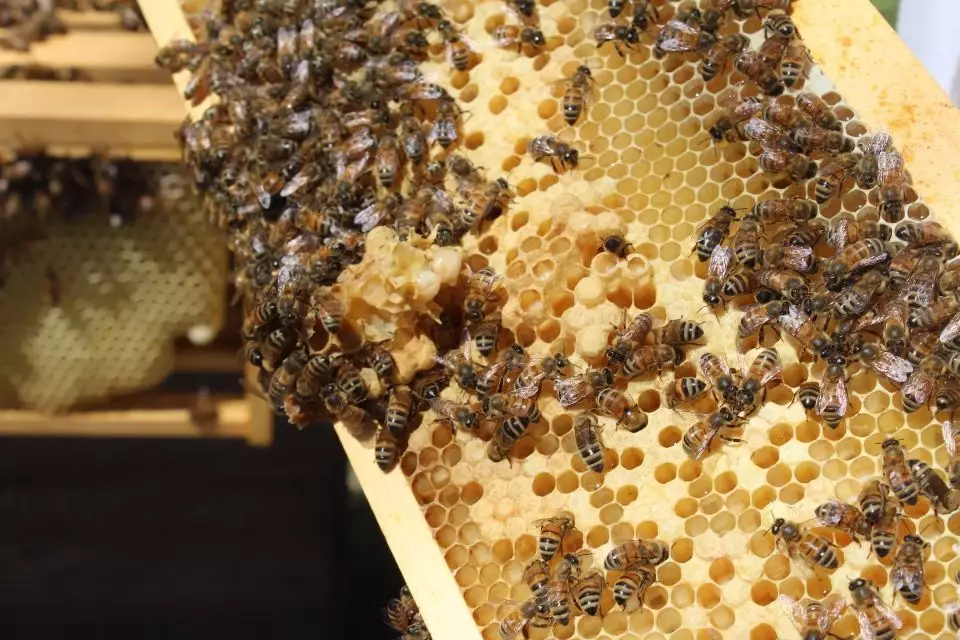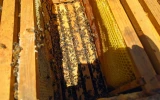How Much Honey Does a 7 or 10 Frame Hive Produce?
If you thought that honey production was an inexact science, think again. Your frames should have plenty of space and the right number of bees to produce a good yield.
A 7- or 10-frame hive typically produces anywhere from 50 to 90 pounds of honey. However, there are different frame sizes, and a larger frame can be more productive than a smaller one. The number and size of frames affect honey production, so if you have bigger frames, you'll likely get a higher yield.
It's important to remember that the quality of the honey produced is just as important as the quantity. There are ways to calculate the amount of honey produced if you know the number of frames and their sizes.
Summary
- Bees can produce between 40 and 90 pounds of honey per full frame.
- A 7-frame beehive can make 40 lbs or 20 kg of honey during harvest season, and a 10-frame beehive can produce 75 lbs or more of honey.
- Having 7 to 10 frames on beehives is ideal for bee colonies.
- You can only harvest honey once and a maximum of twice a year, still depending on the production of honey.
- The best time to harvest honey is during the summer and late fall, when honey production reaches its peak.

On this page:
Total Amount of Honey For 7 and 10 Frame Hives
You can actually calculate the amount of honey your hive can produce. However, this calculation will still depend on the size of each frame because not all frames are equal.
On average, a deep frame yields approximately 4 kg of honey when full, while medium frames bring in 3 kg. As an estimation guide, if you have 10 deep frames filled to capacity within your super, then that's 40 kg of sweet rewards—plenty for most climate conditions.
Overall, the amount of honey produced will depend on the type of hive you use, the size of your frames, and the number of bees in your hive. Additionally, the climate and weather conditions in your area can significantly impact honey production.
Amount of honey for 7-frame hive
The amount of honey for 7-frame hive is approximately 40 lbs or 20 kg of honey during harvest. So when the frame is full, you can expect to get 3.2 lbs. or 1.4 kg of honey for each frame.
Amount of honey for 10-frame hive
For a 10-frame hive, you can expect a yield of approximately 75 lbs (35 kg) of honey during harvest. So when the frame is full, you can expect to gain 7.5 lbs. or 3.4 kg of honey for each frame.
How Many Frames Should a Beehive Have?

Having 7 to 10 frames is ideal for a hive, not because it will guarantee a higher yield, but because it helps the bees maintain their brood chamber more efficiently.
A larger number of frames allows the bees to spread out their resources and build honeycomb more evenly. This is important because a full frame will create space for the queen bee to lay eggs, and too many frames can put a strain on the colony.
Some hives will have 12 to 15 frames to make sure that the bees have enough room to move around and store their resources. However, it is important not to overcrowd a hive, as this could cause issues with honey production. The only reason these types of beehives have more frames is because they have a larger brood chamber and need more frames to spread out their resources.
Why Should You Change Brood Frames?
Generally, you should not need to change brood frames often, as this can disrupt the hive and affect honey production. However, it's recommended to rotate them every 2 to 5 years, depending on the condition of your frames. This will help ensure that the bees have enough space to store their resources and create wax combs.
Brood frames refer to the frames of the hive that are used for egg-laying and storing food. Here are four reasons why you should consider changing your brood frames periodically:
1. To maintain a healthy colony of bees
The reason behind changing your brood frames is to help the bees keep their brood frames in better condition and promote honey production. Rotating frames also helps reduce instances of disease and pest infestation and allows the colony to produce more honey.
2. Prevent small bees from being stuck in the frames
When bees are born from eggs, they can get stuck between the frames of the hive. This is not only dangerous for the baby bee, but it can also lead to a decrease in honey production. When not enough bees are produced, the colony will not have enough resources to maintain its hive.
This cycle will continue when it's not addressed, which is why it's important to check the frames regularly and rotate them when necessary.
3. Prevent bacteria and pathogen build up
As strange as it may sound, honey bees can become sick as well. Bacteria and pathogen build-up in the hive can occur if the frames are not changed regularly. This can lead to a decrease in honey production and create an unhealthy environment for the bees.
Plus, there is a chance of pesticides and other chemicals making their way into the hive if the frames are not changed on a regular basis.
4. Prevent bees from swarming during frame changing
Changing new bee frames is no easy job. It requires proper timing and a method to remove the old frames without damaging them, otherwise, it can upset the hive and lead to bees swarming.
On top of that, creating new beeswax, comb, and honey frames will require more resources from the hive. Although rotating isn't necessary, it can help reduce the risk of swarming and provide more space for the bees to store their resources.
How Many Times A Year Should You Harvest Honey

It's important to harvest honey once or twice a year and no more than that. This is because harvesting too often will put a strain on the colony and could reduce their honey production.
Most beekeepers harvest in late summer or during early fall when honey production is at its peak. During this time, the bees have had plenty of time to store up honey, and the weather is typically warm enough for them to continue working and make more honey.
However, make sure that you leave enough honey for the bees to consume during the winter months. The amount of honey you leave varies based on your location, but generally speaking, a minimum of 60–70 lbs of honey should be left in the hive before winter comes.
Also, the frequency of harvesting honey can vary depending on the type of hive you have, its size, and even the number of bees. If you have a large colony with many bees, you may be able to harvest more honey in less time. However, it is important to remember that harvesting too often can lead to a decrease in honey production and the health of your hive.
Months You Should Not Harvest Honey
Although honey can be harvested year-round, it is typically recommended to avoid harvesting during certain months. This depends on your climate and the type of hive you have, but typically it is best to avoid harvesting honey during the months of September, October, and November.
These months are important for the honeybees because they need to begin storing up food reserves in order to survive the winter. During this time, the bees need to be left alone, so they can build up their food reserves and create their wax combs.
Spring is also a time to avoid harvesting, as the bees are just beginning to build their hive and need resources from the honey they produce. It is also important to avoid harvesting during times of drought or when the flowers they feed on are scarce. By respecting their needs, you can help ensure that your hive remains healthy and productive.



